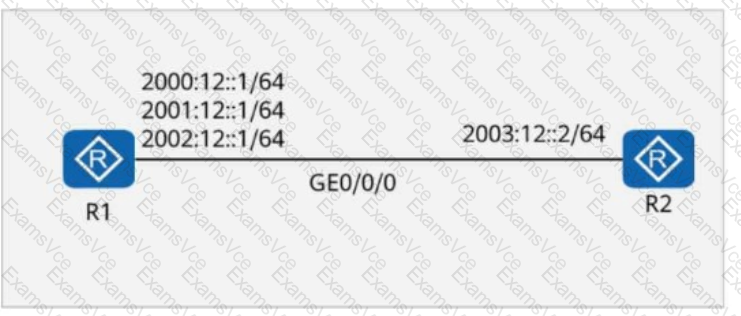Comprehensive and Detailed In-Depth Explanation:
Understanding Intra-Area-Prefix-LSA (Type 9) in OSPFv3
OSPFv3 uses the Intra-Area-Prefix-LSA (Type 9) to advertise IPv6 prefixes associated with either:
A Router-LSA (Type 1) → Describes links and interfaces.
A Network-LSA (Type 2) → Advertises multi-access networks (if a Designated Router exists).
Each router generates one Intra-Area-Prefix-LSA to advertise its own IPv6 prefixes.
Prefix Analysis for Each Router
R1's IPv6 Prefixes:
✅ R1 advertises four prefixes in its Intra-Area-Prefix-LSA.
R2's IPv6 Prefixes:
✅ R2 advertises only one prefix in its Intra-Area-Prefix-LSA.
Checking Each Option:
✅ A. The Intra-Area-Prefix-LSA generated by R2 describes three prefixes. (❌ False, R2 only has one prefix).
✅ B. The Intra-Area-Prefix-LSA generated by R1 describes four prefixes. (✔ True, R1 has four prefixes).
✅ C. The Intra-Area-Prefix-LSA generated by R2 describes four prefixes. (❌ False, R2 only has one prefix).
✅ D. The Intra-Area-Prefix-LSA generated by R1 describes three prefixes. (❌ False, R1 has four prefixes).
Final Conclusion:
✅ B. The Intra-Area-Prefix-LSA generated by R1 describes four prefixes.
Thus, the correct answer is: B. The Intra-Area-Prefix-LSA generated by R1 describes four prefixes.
[Reference:, HCIP-Datacom-Advanced Routing & Switching Technology V1.0 – OSPFv3 LSAs and IPv6 Prefix Advertisement, Huawei Official HCIP-Datacom Study Guide – OSPFv3 Intra-Area-Prefix-LSA and Router-LSA Relationship, Huawei Documentation on OSPFv3 Prefix Propagation Mechanisms, , , , , , ]




